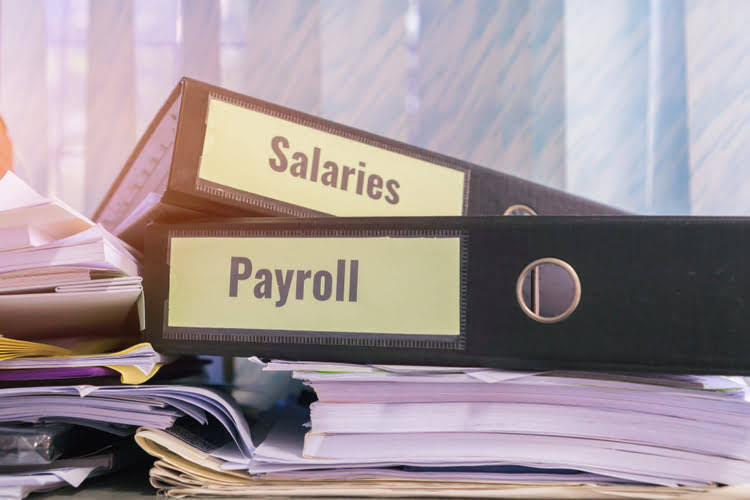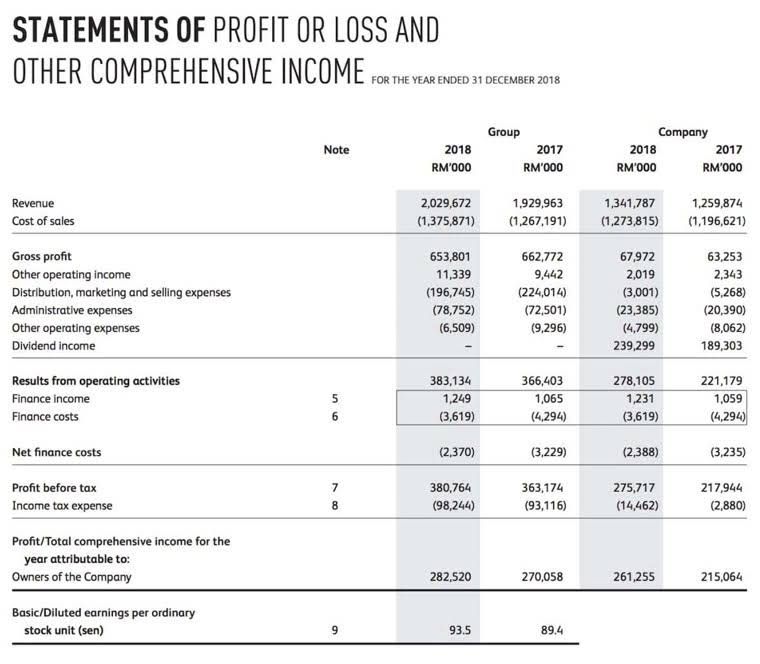Content

Your net income is the amount you’ll be left with after factoring in these outflows. Any chunk of that income invested back in the company is referred to as retained earnings. The TIE ratio’s primary purpose is to help measure the likelihood of a company defaulting on a new loan. This ratio allows banks or investors to determine loan terms, such as the interest rate and loan amount a company can safely take on. By doing this, you will be able to reduce the payments due to the lender.

Being non-cash expenses, depreciation and amortization will not affect the company’s cash position in any way. The return on assets ratio shows how efficiently the assets of a company are being utilized to generate profit. The operating margin ratio compares the operating income to its net sales to illustrate its operating efficiency.
How to Calculate the Times Interest Earned (TIE) Ratio
You’ll likely turn to outside funding opportunities, and it will be beneficial to regularly calculate your TIE ratio. New businesses and those with inconsistent earnings often have to issue stock to raise capital until they create consistent earnings.
- The information featured in this article is based on our best estimates of pricing, package details, contract stipulations, and service available at the time of writing.
- A business that makes a consistent annual income will be able to maintain debt as a part of its total capitalization.
- Times interest earned ratio is a solvency metric that evaluates whether a company is earning enough money to pay its debt.
- The Company would then have to either use cash on hand to make up the difference or borrow funds.
- To determine whether a times interest earned ratio is high, consider calculating the ratio several times over a specified period.
For example, if you have any current outstanding debt, you’re paying interest on that debt each month. For example, a profitable industrial company with very little debt might possess a very high TIE ratio, but might be forgoing opportunities to leverage that profitability to create shareholder value. If a company has a TIE ratio of 2.0, it means not only do they have enough EBIT to cover annual interest payments, but they also have an equal amount of excess EBIT. If a company’s TIE ratio is 1.0, it means they have enough EBIT to cover their annual interest payments. In other words, a ratio of 4 means that a company makes enough income to pay for its totalinterest expense4 times over. Said another way, this company’s income is 4 times higher than its interest expense for the year.
Times interest earned ratio
To determine whether a https://www.bookstime.com/ is high, consider calculating the ratio several times over a specified period. By analyzing a company’s results over time, you will better understand whether a high calculation is standard or a one-time fluke. However, as with Times Interest Earned ratio, cognizance needs to be taken of the fact that the higher the Fixed Payment coverage ratio the lower the risk and lower the return. Therefore, at some point, the Fixed Payment Coverage Ratio may be too high. This will occur if the business is unnecessarily careful with taking up more debt which results in a very low risk but also a lower return. This is not aligned with the overall goal of the enterprise which is the maximization of the wealth of its shareholders.
What information does the times interest earned ratio provide to investors or creditors?
What information does the times interest earned ratio provide to investors or creditors? It provides the creditor with an indication of the ability of the debtor to pay the interest on its debts.
A business that makes a consistent annual income will be able to maintain debt as a part of its total capitalization. Consequently, creditors or investors who look at your income statement will be more than happy to lend to a business that has been consistently making enough money over a long period of time. The times interest earned ratio measures a company’s ability to pay its interest expenses. The times interest earned ratio is expressed in numbers instead of percentages.
From the course: Excel 2007: Financial Analysis
Investors often view businesses with a high TIE ratio as risk-averse, meaning the company might not be reinvesting to expand the business, limiting the company’s growth. For this reason, a bank or investor will consider several different metrics before providing funding. Usually, a higher times interest earned ratio is considered to be a good thing. But if the balance is too high, it could also mean that the company is hoarding all the earnings without putting them back into the company’s operations. For sustained growth for the long term, businesses must reinvest in the company. The times interest earned ratio provides investors and creditors with an idea of how easily a company can repay its debts. It is important to note, however, that the ratio does have some limitations.
A higher times interest earned ratio is favorable because it means that the company presents less of a risk to investors and creditors in terms of solvency. From an investor or creditor’s perspective, an organization that has a times interest earned ratio greater than 2.5 is considered an acceptable risk. Companies that have a times interest earned ratio of less than 2.5 are considered a much higher risk for bankruptcy or default. The times interest earned ratio measures the ability of the enterprise to meet its financial obligations .

Lenders mostly use it to ascertain if a prospective borrower can be given a loan or not. Due to Hold the Mustard’s success, your family is debating a major renovation that would cost $100,000. Rosemary Carlson is an expert in finance who writes for The Balance Small Business. She was a university professor of finance and has written extensively in this area. TIE ratios are an indicator of the long-term financial strength of an organization.
Solvency RatiosSolvency Ratios are the ratios which are calculated to judge the financial position of the organization from a long-term solvency point of view. EBITEarnings before interest and tax refers to the company’s operating profit that is acquired after deducting all the expenses except the interest and tax expenses from the revenue. The times interest earned ratio formula is earnings before interest and taxes divided by the total amount of interest due on the company’s debt, including bonds. The Times Interest Earned Ratio measures a company’s ability to service its interest expense obligations based on its current operating income. A business can choose to not utilize excess income for reinvestment in the company through expansion or new projects, but rather pay down debt obligations. For this reason, a company with a high times interest earned ratio may lose favor with long-term investors. As a rule, companies that generate consistent annual earnings are likely to carry more debt as a percentage of total capitalization.
Times interest Earned Ratio
Generally, the higher the TIE, the more cash the company will have left over. The times interest earned ratio is a solvency ratio which illustrates how well a company can meet its long-term debt obligations. This is an important measure for creditors to utilize when deciding whether or not to lend money to a company. Other solvency ratios include the debt-to-assets ratio, the equity ratio, and the debt-to-equity (D/E) ratio. Solvency ratios are similar to liquidity ratios in that they both examine the financial stability of a company, but liquidity ratios look at short-term debt while solvency ratios look at long-term debt. The times interest earned ratio looks specifically at the interest charges of long-term debt.
- Cash flow is still more important for companies to work on rather than working on a higher TIE ratio and avoid bankruptcy.
- We also reference original research from other reputable publishers where appropriate.
- EBIT is found by subtracting expenses from revenue, excluding tax and interest.
- The times interest earned ratio is calculated by dividing the income before interest and taxes figure from the income statement by the interest expense also from the income statement.
You can use the times interest earned ratio calculator below to quickly calculate your company’s ability to pay interest by entering the required numbers. In simple terms, the TIE ratio is the number of times the current interest expense can be paid off by the current EBITDA. You can find the interest expense and calculate the company’s pre-tax income from the parameters available in the income statement.
Analysis
Because this number indicates the ability of your business to pay interest expense, lenders, in particular, pay close attention to this number when deciding whether to provide a loan to your business. Businesses with a TIE ratio of less than two may indicate to investors and lenders a higher probability of defaulting on a future loan, while a TIE ratio of less than 1 indicates serious financial trouble. When EBIT is divided by total interest expenses, it can be interpreted as how many times the firm is earning to cover its interest obligation. Before taxes, and this is the income generated purely from business after deducting the expenses that are incurred necessary to run that business. The TIE’s main purpose is to help quantify a company’s probability of default.

Last year they went to a second bank, seeking a loan for a billboard campaign. The founders each have “company credit cards” they use to furnish their houses and take vacations. The total balance on those credit cards is $50,000 with an annual interest rate of 20 percent. Based on the times interest earned formula, Hold the Mustard has a TIE ratio of 80, which is well above acceptable. As we previously discussed, there is a lot more than this basic equation that goes into a lender’s decision. But you are on top of your current debts and their respective interest rates, and this will absolutely play into the lender’s decision process. So long as you make dents in your debts, your interest expenses will decrease month to month.
Times Interest Earned Ratio Video
This, in turn, helps determine relevant debt parameters such as the appropriate interest rate to be charged or the amount times interest earned ratio of debt that a company can safely take on. Get instant access to video lessons taught by experienced investment bankers.
Failing to meet these obligations could force a company into bankruptcy. It is used by both lenders and borrowers in determining a company’s debt capacity. Time interest earned ratio , also known as interest coverage ratio, indicates how well a company can cover its interest payments on a pretax basis. The larger the time interest earned, the more capable the company is at paying the interest on its debt. It is used to measure how well the company can cover its interest obligations. A higher TIE ratio shows that a company can cover its interest payments and still have room to reinvest.
- The company’s operations are much more profitable than any of its peers, which will also result in more profits.
- In this respect, Tim’s business is less risky and the bank shouldn’t have a problem accepting his loan.
- However, as with times interest earned ratio, cognizance needs to be taken of the fact that the higher the ratio the lower the risk and lower the return.
- Just like with most fixed expenses, if a firm is not able to make payments, it could lead to bankruptcy and, thus, to the company’s end.
- For prospective lenders, a high interest expense compared to to your earnings can be a red flag.
The times interest earned ratio is a calculation that measures a company’s ability to pay its interest expenses. A financial analyst can create a time series of the times interest earned ratio to have a clearer grasp of the business’ financial status. A single ratio may not mean anything because it could only speak for one set of revenues and earnings. By calculating the ratio on a regular basis, this value will become more meaningful in terms of representing a company’s true fiscal status. When the times interest ratio is less than 1, it means the interest expense is more than the company’s earnings before tax. When the TIE ratio is 1, the company can barely repay the debt without any cash remaining for tax and other expenses.
If you find yourself in this uncomfortable position, reach out to a financial consulting provider to explore how your company got here and how it can get out. This may entail consolidating your debts and perhaps some painstaking decisions about your business.
You have a company credit card for random necessities, with a current balance of $5,000 and an annual interest rate of 15 percent. Your company’s earnings before interest and taxes are pretty much what they sound like. This number is a measure of your revenue with all expenses and profits considered, before subtracting what you expect to pay in taxes and interest on your debts. Times interest earned is used to measure if a company can pay up its debts or not. This calculates the number of times a company can pay up its interest charges before the deductions of tax. It is basically calculated by estimating the earnings of a company before its interest and tax rates . This is then divided by the total interest to be paid on bonds and other contractual debt.
Is a high current ratio good or bad?
What Does a Higher Current Ratio Mean? A company with a current ratio of between 1.2 and 2 is typically considered good. The higher the current ratio, the more liquid a company is. However, if the current ratio is too high (i.e. above 2), it might be that the company is unable to use its current assets efficiently.
If a lender sees a history of generating consistent earnings, the firm will be considered a better credit risk. It measures how many times the company turns over its inventory during a period, such as the financial period.
Consolidated Leverage Ratio means, as of any date of determination, the ratio of Consolidated Funded Indebtedness as of such date to Consolidated EBITDA for the period of the four fiscal quarters most recently ended. Depreciation and amortization are non-cash expenses, and thus, they don’t impact the cash position. TIE indicates whether or not the company earns enough to cover its interest charges.
- Suppose a business has an EBIT of $ and interest payable on the loan is $25000.
- A times interest earned ratio of 4.4 suggests the cell phone service provider is a good credit risk for a business loan to expand.
- Therefore, its total annual interest expense will be $500,000 and its EBIT will be $1.5 million.
- For this reason, a bank or investor will consider several different metrics before providing funding.
- Industry averages differ significantly between industries for inventory turnover ratio.
- When a company has a TIE ratio of less than 2.5, it suggests to investors that the company is financially unstable and at higher risk for default or bankruptcy.
- You can’t just walk into a bank and be handed $1 million for your business.
Moreover, a higher ratio doesn’t have as many risks as a low one does, as the latter one brings credit risks. A bank or investor would use the ratio to determine if a company might need to pay down other debts before taking on more. A business could use the ratio to ensure it is not risking solvency by taking on additional debt. Most companies need to borrow money occasionally to maintain or expand their business. However, if a company can’t meet its debt obligations, it could go bankrupt. The TIE ratio is a predictor of how likely borrowed funds will get repaid.
EBIT – The profits that the business has got before paying taxes and interest. The TIE ratio is used when a company decides to look for debt or issue the stock for capitalization purposes. Also, Interest Expense is an accounting calculation that is not always exactly correct, as when it includes premiums or discounts on bond sales, for example, instead of the given rate on the face of the bonds. Utility firms, for instance, are regularly making an income since their product is a necessary expense for consumers.
Therefore, generally, a higher Times Interest Earned Ratio is the better. Both techniques are very simple to use and effective at analysing capital structure decisions. The health of this ratio is an important factor which contributes to a healthy return on investment (ROI/ROA). In other words, Jonick, in 2019, earned, before taxes, 6.7 times the amount of interest incurred.
